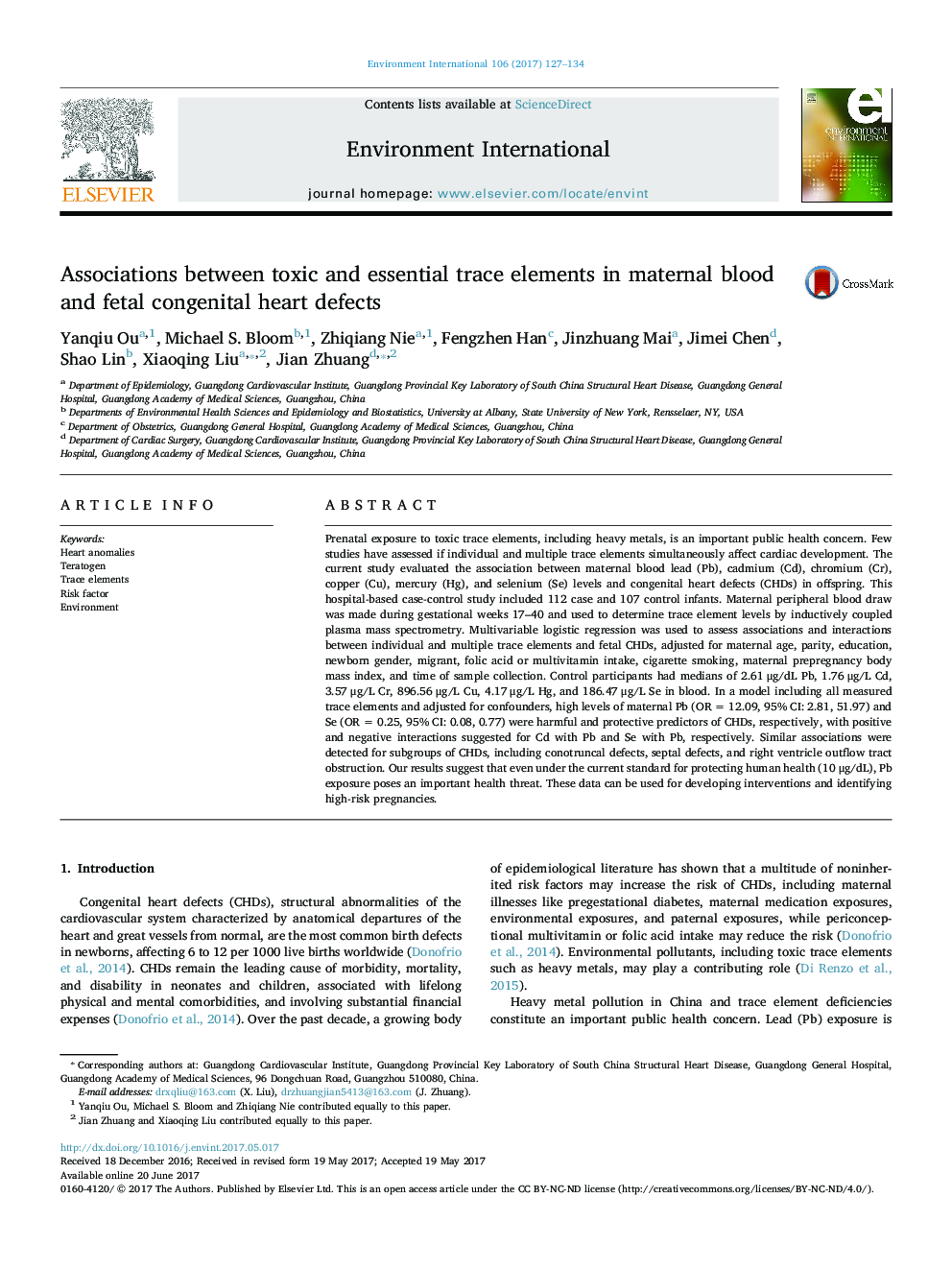| کد مقاله | کد نشریه | سال انتشار | مقاله انگلیسی | نسخه تمام متن |
|---|---|---|---|---|
| 5748380 | 1619024 | 2017 | 8 صفحه PDF | دانلود رایگان |
- Few studies assessed trace elements' effects on congenital heart defects (CHDs).
- We measured six trace elements in maternal blood as predictors of CHDs in offspring.
- Higher blood lead and lower blood selenium significantly predicted CHDs.
- Maternal blood cadmium levels modified the effects of lead and selenium on CHDs.
- Current lead exposure levels in Guangdong Province, China may threaten fetal health.
Prenatal exposure to toxic trace elements, including heavy metals, is an important public health concern. Few studies have assessed if individual and multiple trace elements simultaneously affect cardiac development. The current study evaluated the association between maternal blood lead (Pb), cadmium (Cd), chromium (Cr), copper (Cu), mercury (Hg), and selenium (Se) levels and congenital heart defects (CHDs) in offspring. This hospital-based case-control study included 112 case and 107 control infants. Maternal peripheral blood draw was made during gestational weeks 17-40 and used to determine trace element levels by inductively coupled plasma mass spectrometry. Multivariable logistic regression was used to assess associations and interactions between individual and multiple trace elements and fetal CHDs, adjusted for maternal age, parity, education, newborn gender, migrant, folic acid or multivitamin intake, cigarette smoking, maternal prepregnancy body mass index, and time of sample collection. Control participants had medians of 2.61 μg/dL Pb, 1.76 μg/L Cd, 3.57 μg/L Cr, 896.56 μg/L Cu, 4.17 μg/L Hg, and 186.47 μg/L Se in blood. In a model including all measured trace elements and adjusted for confounders, high levels of maternal Pb (OR = 12.09, 95% CI: 2.81, 51.97) and Se (OR = 0.25, 95% CI: 0.08, 0.77) were harmful and protective predictors of CHDs, respectively, with positive and negative interactions suggested for Cd with Pb and Se with Pb, respectively. Similar associations were detected for subgroups of CHDs, including conotruncal defects, septal defects, and right ventricle outflow tract obstruction. Our results suggest that even under the current standard for protecting human health (10 μg/dL), Pb exposure poses an important health threat. These data can be used for developing interventions and identifying high-risk pregnancies.
Journal: Environment International - Volume 106, September 2017, Pages 127-134
